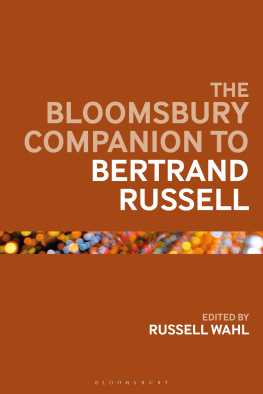Jenny B. Wahl - Law and Economics
Here you can read online Jenny B. Wahl - Law and Economics full text of the book (entire story) in english for free. Download pdf and epub, get meaning, cover and reviews about this ebook. year: 1998, publisher: Routledge, genre: Science. Description of the work, (preface) as well as reviews are available. Best literature library LitArk.com created for fans of good reading and offers a wide selection of genres:
Romance novel
Science fiction
Adventure
Detective
Science
History
Home and family
Prose
Art
Politics
Computer
Non-fiction
Religion
Business
Children
Humor
Choose a favorite category and find really read worthwhile books. Enjoy immersion in the world of imagination, feel the emotions of the characters or learn something new for yourself, make an fascinating discovery.

- Book:Law and Economics
- Author:
- Publisher:Routledge
- Genre:
- Year:1998
- Rating:3 / 5
- Favourites:Add to favourites
- Your mark:
- 60
- 1
- 2
- 3
- 4
- 5
Law and Economics: summary, description and annotation
We offer to read an annotation, description, summary or preface (depends on what the author of the book "Law and Economics" wrote himself). If you haven't found the necessary information about the book — write in the comments, we will try to find it.
Law and Economics — read online for free the complete book (whole text) full work
Below is the text of the book, divided by pages. System saving the place of the last page read, allows you to conveniently read the book "Law and Economics" online for free, without having to search again every time where you left off. Put a bookmark, and you can go to the page where you finished reading at any time.
Font size:
Interval:
Bookmark:
Overview and Economic Analysis
of Property and Criminal Law
Edited with an introduction by
Jenny B. Wahl
Carleton College


R. H. COASE
University of Virginia
I. T HE P ROBLEM T O B E E XAMINED
T HIS paper is concerned with those actions of business firms which have harmful effects on others. The standard example is that of a factory the smoke from which has harmful effects on those occupying neighbouring properties. The economic analysis of such a situation has usually proceeded in terms of a divergence between the private and social product of the factory, in which economists have largely followed the treatment of Pigou in The Economics of Welfare . The conclusions to which this kind of analysis seems to have led most economists is that it would be desirable to make the owner of the factory liable for the damage caused to those injured by the smoke, or alternatively, to place a tax on the factory owner varying with the amount of smoke produced and equivalent in money terms to the damage it would cause, or finally, to exclude the factory from residential districts (and presumably from other areas in which the emission of smoke would have harmful effects on others). It is my contention that the suggested courses of action are inappropriate, in that they lead to results which are not necessarily, or even usually, desirable.
II. T HE R ECIPROCAL N ATURE OF THE P ROBLEM
The traditional approach has tended to obscure the nature of the choice that has to be made. The question is commonly thought of as one in which A inflicts harm on B and what has to be decided is: how should we restrain A? But this is wrong. We are dealing with a problem of a reciprocal nature. To avoid the harm to B would inflict harm on A. The real question that has to be decided is: should A be allowed to harm B or should B be allowed to harm A? The problem is to avoid the more serious harm. I instanced in my previous article If we assume that the harmful effect of the pollution is that it kills the fish, the question to be decided is: is the value of the fish lost greater or less than the value of the product which the contamination of the stream makes possible. It goes almost without saying that this problem has to be looked at in total and at the margin.
III. T HE P RICING S YSTEM WITH L IABILITY FOR D AMAGE
I propose to start my analysis by examining a case in which most economists would presumably agree that the problem would be solved in a completely satisfactory manner: when the damaging business has to pay for all damage caused and the pricing system works smoothly (strictly this means that the operation of a pricing system is without cost).
A good example of the problem under discussion is afforded by the case of straying cattle which destroy crops growing on neighbouring land. Let us suppose that a farmer and a cattle-raiser are operating on neighbouring properties. Let us further suppose that, without any fencing between the properties, an increase in the size of the cattle-raisers herd increases the total damage to the farmers crops. What happens to the marginal damage as the size of the herd increases is another matter. This depends on whether the cattle tend to follow one another or to roam side by side, on whether they tend to be more or less restless as the size of the herd increases and on other similar factors. For my immediate purpose, it is immaterial what assumption is made about marginal damage as the size of the herd increases.
To simplify the argument, I propose to use an arithmetical example. I shall assume that the annual cost of fencing the farmers property is $9 and that the price of the crop is $1 per ton. Also, I assume that the relation between the number of cattle in the herd and the annual crop loss is as follows:
Number in Herd (Steers) | Annual Crop Loss (Tons) | Crop Loss per Additional Steer (Tons) |
Given that the cattle-raiser is liable for the damage caused, the additional annual cost imposed on the cattle-raiser if he increased his herd from, say, 2 to 3 steers is $3 and in deciding on the size of the herd, he will take this into account along with his other costs. That is, he will not increase the size of the herd unless the value of the additional meat produced (assuming that the cattle-raiser slaughters the cattle), is greater than the additional costs that this will entail, including the value of the additional crops destroyed. Of course, if, by the employment of dogs, herdsmen, aeroplanes, mobile radio and other means, the amount of damage can be reduced, these means will be adopted when their cost is less than the value of the crop which they prevent being lost. Given that the annual cost of fencing is $9, the cattle-raiser who wished to have a herd with 4 steers or more would pay for fencing to be erected and maintained, assuming that other means of attaining the same end would not do so more cheaply. When the fence is erected, the marginal cost due to the liability for damage becomes zero, except to the extent that an increase in the size of the herd necessitates a stronger and therefore more expensive fence because more steers are liable to lean against it at the same time. But, of course, it may be cheaper for the cattle-raiser not to fence and to pay for the damaged crops, as in my arithmetical example, with 3 or fewer steers.
It might be thought that the fact that the cattle-raiser would pay for all crops damaged would lead the farmer to increase his planting if a cattle-raiser came to occupy the neighbouring property. But this is not so. If the crop was previously sold in conditions of perfect competition, marginal cost was equal to price for the amount of planting undertaken and any expansion would have reduced the profits of the farmer. In the new situation, the existence of crop damage would mean that the farmer would sell less on the open market but his receipts for a given production would remain the same, since the cattle-raiser would pay the market price for any crop damaged. Of course, if cattle-raising commonly involved the destruction of crops, the coming into existence of a cattle-raising industry might raise the price of the crops involved and farmers would then extend their planting. But I wish to confine my attention to the individual farmer.
I have said that the occupation of a neighbouring property by a cattle-raiser would not cause the amount of production, or perhaps more exactly the amount of planting, by the farmer to increase. In fact, if the cattle-raising has any effect, it will be to decrease the amount of planting. The reason for this is that, for any given tract of land, if the value of the crop damaged is so great that the receipts from the sale of the undamaged crop are less than the total costs of cultivating that tract of land, it will be profitable for the farmer and the cattle-raiser to make a bargain whereby that tract of land is left uncultivated. This can be made clear by means of an arithmetical example. Assume initially that the value of the crop obtained from cultivating a given tract of land is $12 and that the cost incurred in cultivating this tract of land is $10, the net gain from cultivating the land being $2.1 assume for purposes of simplicity that the farmer owns the land. Now assume that the cattle-raiser starts operations on the neighbouring property and that the value of the crops damaged is $1. In this case $11 is obtained by the farmer from sale on the market and $1 is obtained from the cattle-raiser for damage suffered and the net gain remains $2. Now suppose that the cattle-raiser finds it profitable to increase the size of his herd, even though the amount of damage rises to $3; which means that the value of the additional meat production is greater than the additional costs, including the additional $2 payment for damage. But the total payment for damage is now $3. The net gain to the farmer from cultivating the land is still $2. The cattle-raiser would be better off if the farmer would agree not to cultivate his land for any payment less than $3. The farmer would be agreeable to not cultivating the land for any payment greater than $2. There is clearly room for a mutually satisfactory bargain which would lead to the abandonment of cultivation. subdivision of it. Suppose, for example, that the cattle have a well-defined route, say, to a brook or to a shady area. In these circumstances, the amount of damage to the crop along the route may well be great and if so, it could be that the farmer and the cattle-raiser would find it profitable to make a bargain whereby the farmer would agree not to cultivate this strip of land.
Font size:
Interval:
Bookmark:
Similar books «Law and Economics»
Look at similar books to Law and Economics. We have selected literature similar in name and meaning in the hope of providing readers with more options to find new, interesting, not yet read works.
Discussion, reviews of the book Law and Economics and just readers' own opinions. Leave your comments, write what you think about the work, its meaning or the main characters. Specify what exactly you liked and what you didn't like, and why you think so.






